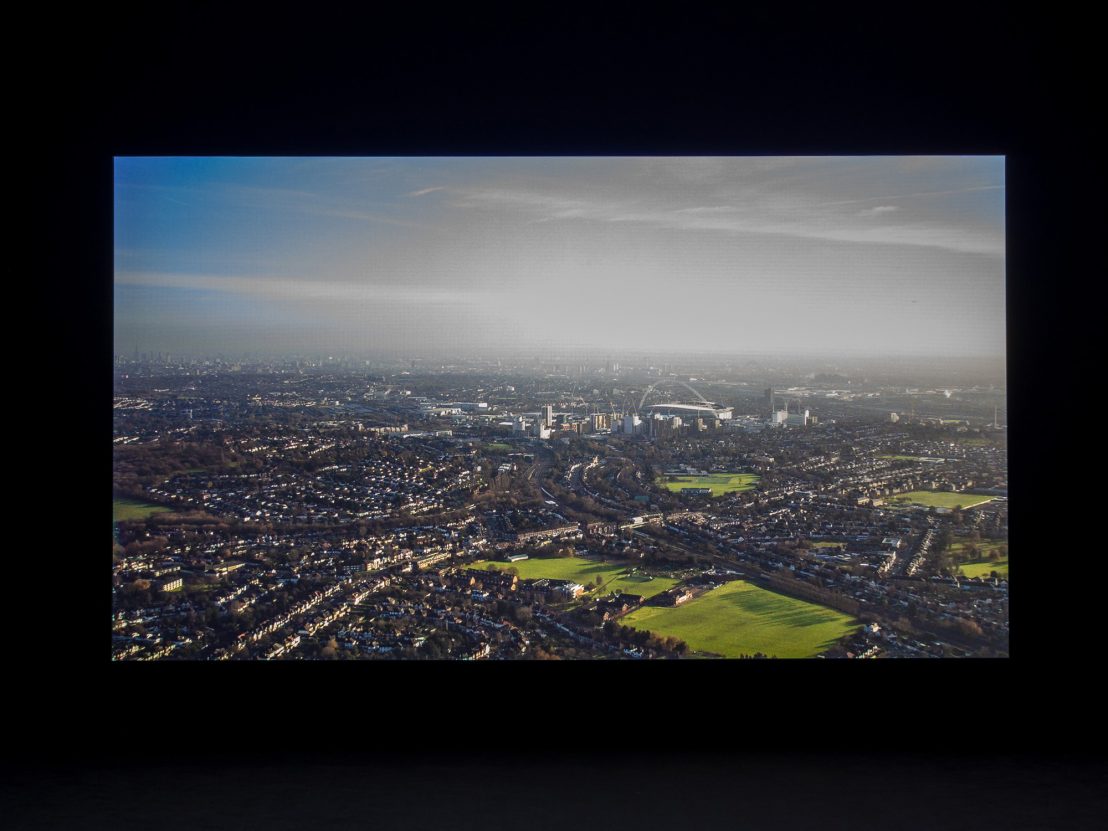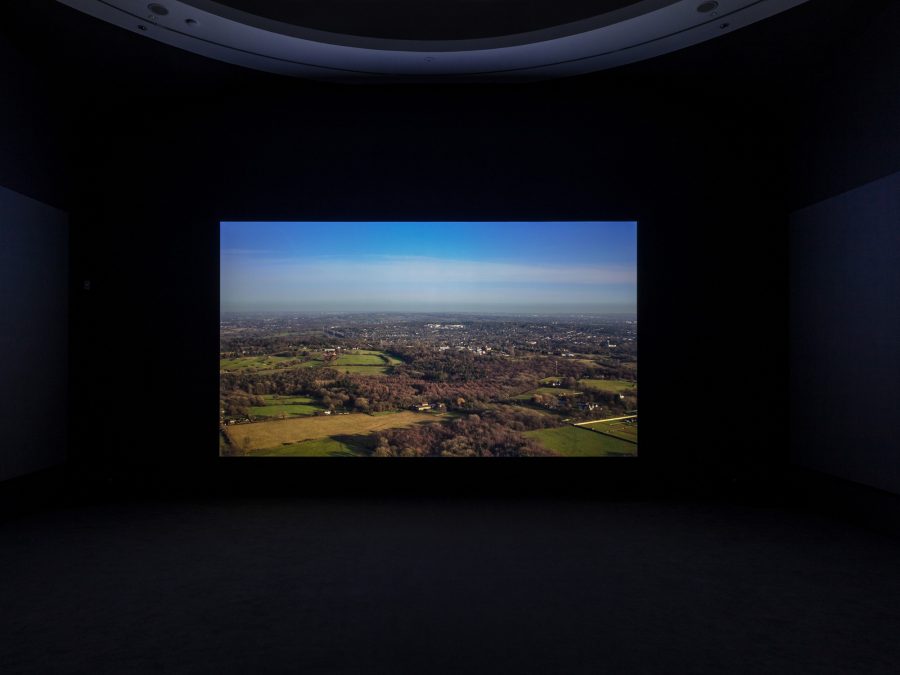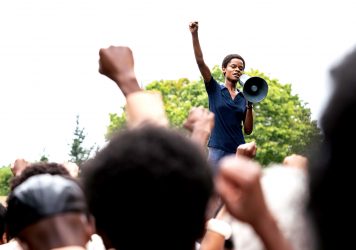
Within the pristine white walls of the Serpentine Gallery set in the manicured serenity of Hyde Park, there is another London – one that was left to burn. In a 24 minute film that screens throughout the day, we see footage captured by Steve McQueen as he surveys the charred remains of North Kensington’s Grenfell Tower six months after a fire that raged for 60 hours and ended up taking 72 lives.
This is an act of remembrance for the dead that also serves as a J’accuse aimed at politicians who, despite urgent warnings that the cladding used to line the tower was unsafe, did nothing to intervene before the avoidable tragedy of 14 June, 2017.
McQueen has forged a reputation as an artist, and then as a filmmaker, for uncompromising visions that compel audiences to push through what is comfortable to see brutality and injustice. His work has a corollary that can sometimes flow through powerfully confrontational works of art, which is to say: there is a strange hope that comes from looking despair in the eye, especially when we do so en masse.
Grenfell may be the most powerful film he has ever made. Running to only 24 minutes, its starkness is its strength.
The facts of a British tragedy that history will conjure in one dread-fuelled word, like Hillsborough, is not the focus of the film. The lives lost, the alarms that went unheeded, the violent indifference of the political establishment before, during and after, are made available to visitors through exhibition literature.
But the film itself, like its subject, is exoskeletal. It is a silent stock-taking of the tower six months after the fire. The footage is so meticulously observational that it could be submitted as forensic legal evidence. In a sense, this is its purpose: to usher the public into a room to witness the aftermath of a crime scene, so that we will carry with us the question of what justice will follow.
The film begins, and Grenfell Tower is approached slowly as a drone-mounted camera glides through the skies over west London on a crisp December day. We are aerial tourists, noting Wembley stadium, and – if you’re me – realising your knowledge of capital skyscapes could stand to be improved. The footage seems so normal, almost like a Visit London infomercial, and it would be peaceful if only we did not know where the drone was headed.
McQueen is in no rush. The repetitive pattern of snaking roads, houses, tiny cars and trees creates an expectant lull. The relative lack of visual stimulation makes you aware of where you are and who else is in the darkened auditorium bearing witness. The watch of the woman beside me ticked inside my head, a baby gurgled, someone cleared their throat. These small sounds only served to underscore that, otherwise, we were sat in a funereal hush.

Then we see it, a blackened pyre flanked by normal operational buildings like flats, a school, a business under a railway arch. The camera moves slowly but surely, pushing in… and in… and in. The ambient birdsong fades out. The tower looks like a warzone once the shells have stopped and the bodies have been taken away. The monstrousness of its appearance is all the more shocking because it is incongruous with the rest of the buildings. It looks like a target and, indirectly, it was.
In the depths of grief, there are no words. For the length of Grenfell, there are no words. McQueen understands in his bones that everything he wants to communicate is in the images themselves.
On the Serpentine website, press seeking images to accompany their reviews are offered a bland aerial shot with a note that reads: “The film still has been issued to be as sensitive to the bereaved families, survivors and the community as possible in the media coverage of the exhibition. Please use this still to accompany articles on Steve McQueen’s work Grenfell. Please refrain from using other stock images of the Tower, especially those on the night of the disaster and of the uncovered tower to be respectful to the Grenfell community as these images can be distressing.”
This is a film that speaks a visual language that is more sensitive and impactful than the barrage of newsreel trauma most of us associate with tragedy. In an effort to spare families, survivors and the community, McQueen has refined his already powerful mode of storytelling into something that holds deep compassion for a viewership bludgeoned by violence. He is saying: you’ve already seen enough bloodshed, you don’t need to see any more. Widely known as the director of such visceral fictionalised biopics as Hunger and 12 Years A Slave, this showcases the different side of his instincts that emerge when documenting stories still raw in living memory.
The camera circles the tower in increasingly tight circles, still moving with a deliberate and assured slowness. The closer we get, the more there is to see: pathologists in white on the scaffolding; a lift inching up and down the outside of the tower; bags of refuse stacked up inside; the beginnings of a cover starting at the bottom of a tower; windows that are smashed up and charred; windows that are papered over and white. Each audience member brings their own context and their own questions to these scenes of quiet industry on a site that was recently a mass grave.
When the film ends, the usher asks if we’re all okay and says people can stay and sit awhile longer if they want. The screening room leads into a room where one wall has a list of 72 names. I speak each one aloud in my mind.
“I feared once the tower was covered up, it would only be a matter of time before it faded from the public’s memory. In fact there were people who were counting on that being the case,” McQueen wrote in the exhibition introduction.
The poet Christina Rossetti once had this to say: “And if thou wilt, remember. And if thou wilt, forget.”
Thanks to Steve McQueen, more of us wilt remember. The cauldron of political clarity and personal grief in Grenfell makes it a vigil that is far from over.
Grenfell by Steve McQueen plays for free at the Serpentine Gallery, London until 10 May, 2023. Free tickets can be booked in advance online.
Published 29 Apr 2023

By Aaron Hunt
The director reflects on the making of his triumphant ode to Black culture and resilience, Small Axe.

By Rogan Graham
Steve McQueen’s Small Axe anthology kicks off with this searing court room drama about the Mangrove Nine trial.

Steve McQueen delivers a sublime party film for the ages in the second instalment of his Small Axe series.